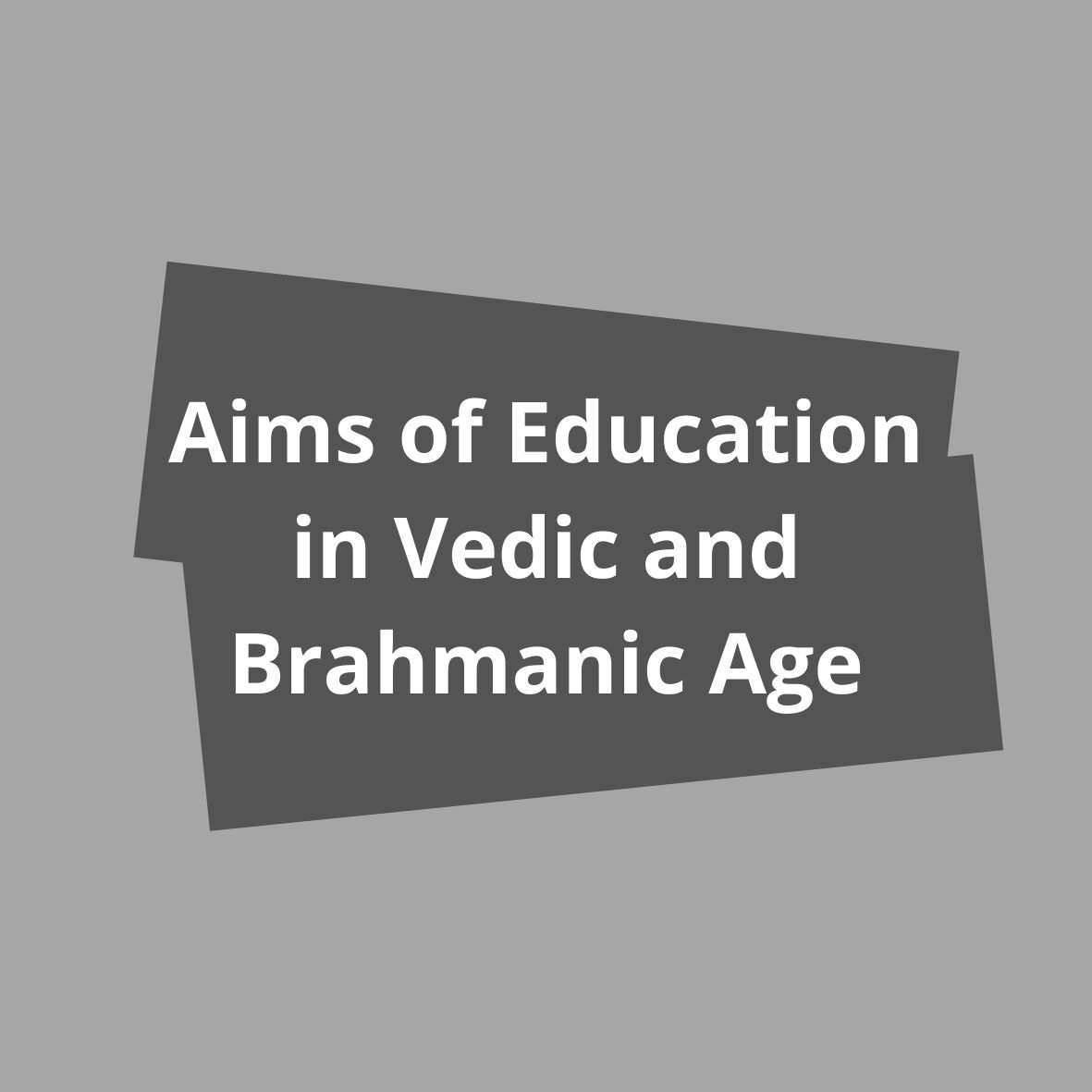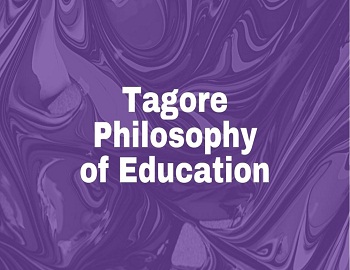Aims of Education in Vedic and Brahmanic Age:
(1) Close Tie between Education and Religion- Education and religion have a close relationship. Though these are guiding forces, they have their own importance in themselves. They affect society in different ways. The main aim of Vedic education was religious obeisance. In those days, the leaders of the religion used to impart education to society. Macdonell is of the opinion that Indian literature bears the marks of the religion since its very inception thousand years ago. It is quite clear from the word “Veda”. The word “Veda” connotes the entire branch of original knowledge. Dr R. K. Mukerjee has also remarked:
“Since the birth of the oldest Vedic poetry, we find Indian literature for a period of more than a thousand years bearing an exclusively religious stamp”.
Sequeria has also remarked:
“Education was meant to be religious initiation………early Indian education was essentially religious and personal”.
(2) Spiritual Development- In those days, religious sentiments found their expression in many ways. People used to offer their evening prayers and worshipped God through Yagya etc. Ancient Gurukuls were full of a religious atmosphere.
Man feels self-satisfaction when he obeys his religion. That is why Indian Saints and Rishis are known throughout the world, for their devotion to the Sovereign power of the unseen spiritual world. Their devotion, Tapa and importance of spiritual power are mysterious for us even today. To know the absolute is the only aim of spiritualism. The same idea echoes in the saying of Upanishads:
“The Theory is that the mind seeking external knowledge contracts and is contaminated and transformed by matter and communicates this contamination to the soul”.
(3) Acquisition of Knowledge- Acquisition of knowledge was the chief aim in the Vedic age and as a result of this aim, that age could produce several thoroughly learned and cultured personalities and philosophers of the first rank. In those days, “Knowledge was acquired for the sake of knowledge only”. They could get proper encouragement and opportunity to meditate over their studies and to become fully acquainted with their subjects in the Gurukuls. The students would not depend on books only, but they used to get practical experience of the subject by travelling in different parts of the country. Learned people of those days were primarily enriched with philosophical and religious knowledge. And thus they were not only concerned with the material needs of life as we are today but also realized the importance of spiritual requirements. They had very limited needs. They led a simple life. Dr Radha Kamal Mukerjee has said:
“Learning in India through the ages had been prized and pursued not for its own sake, if we may so put it, but for the sake, and as a part, of religion”.
(4) Character Building- To build the character of students was the highest aim of Vedic education. Students in those days led a life of Brahmacharya in their Gurukuls and they always followed the paths which their teachers might consider proper and ideal for them.
Manusmiriti points out that a man of character through having little knowledge of Veda is far better than those highly learned men who are fair to lead a pious life.
Thus, the character is all in all for a man. Of course, such an aim of education was definitely of a high standard. Even now it is said that if the character is lost everything is lost.
(5) Development of Personality- Man rises due to his willpower and it is his will to sacrifice that always gives him encouragement in his life. In Vedic education, there were many systems currently in the Gurukuls. There was no distinction between rich and poor students. They would arrange distinction, meetings, debates and Kavi Gosthi from time to time so that those students could be able to develop their personalities. Some educationists are at fault to think that ancient Hindu education suppressed the development of personality. Such thinkers should go deep if they wish to know the real effect of ancient education.
(6) Development of Culture- Indian culture is unique in its qualities. It has been respected and worshipped from times immemorial and even today it has a high place in the world civilization due to its ancient traditions. The development and spread of culture was an important aim of Vedic education. Evidence regarding this fact is produced by the remnants of ancient Indian culture which have been found in distant countries like Cambodia, Laos, Java, Sumatra, Malaya, South Africa, America etc. Education was not an easy job for all the classes of people. Therefore it was mainly entrusted to Brahmins. Development of culture was linked with the highest aims of education in those days.
(7) Development of Social Element- The students of the Vedic Age was expected that they would benefit society with their experience and knowledge. Ancient Gurus would give teachings of social service to their students while bidding them farewell from Gurukuls. Their spirit of social service remained lifelong. Their attitude of generosity and sympathy also persisted.
(8) Development of Capacity to Earn Livelihood- It is now essential for a student after having accomplished his studies, to do something for his livelihood. Ancient education was not averse to this aim. Every student was given education in accordance with his aptitude so that he might utilize his knowledge in a proper manner in practical life i.e. “Varnsharm Dharma”. Brahmins were expected to acquire knowledge and impart it to society. It was the duty of the Kshatriyas to do their best for the defence of their country. Vaishyas were meant for trades and cultivation so as to enrich society. Shudras were those who were there to help others in their task. In the beginning, this division was based on duties i.e. doctrine of Karma, in the Vedic age, but in later periods it gradually came to be based on birth which was also later on guided by traditions and hereditary quality.









Comments (No)